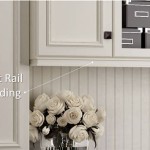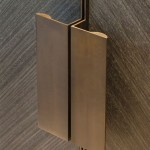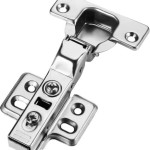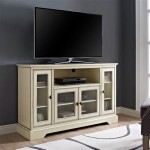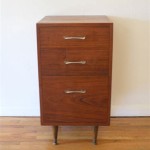Kitchen Cabinet Knobs for White Cabinets: A Comprehensive Guide
White cabinets remain a consistently popular choice for kitchen design, offering a clean, bright, and versatile foundation for various styles. Selecting the right hardware, particularly kitchen cabinet knobs, plays a crucial role in complementing the overall aesthetic and functionality of the space. The seemingly small detail of a cabinet knob can significantly impact the perceived style, texture, and even the perceived value of the kitchen.
This article aims to provide a comprehensive guide to selecting kitchen cabinet knobs for white cabinets, covering various styles, materials, finishes, installation considerations, and practical tips to ensure a cohesive and visually appealing result.
Matching Style: Knobs for Different Kitchen Aesthetics
The first step in choosing cabinet knobs is aligning them with the overall style of the kitchen. White cabinets are incredibly versatile, lending themselves well to a broad range of design aesthetics, from classic and traditional to modern and contemporary. The chosen knob should enhance and reflect the desired style.
For traditional kitchens, ornate knobs with intricate detailing are a suitable choice. These knobs often feature classic shapes, such as round or mushroom styles, and may incorporate decorative elements like floral patterns, beading, or raised panels. Finishes like antique brass, oil-rubbed bronze, or polished nickel can further enhance the traditional feel.
Transitional kitchens, which blend elements of traditional and modern design, offer a wider range of knob options. Simple, elegant knobs with clean lines and subtle detailing work well in this style. Round, square, or slightly curved knobs in finishes like brushed nickel, satin brass, or polished chrome can complement transitional cabinetry.
Modern and contemporary kitchens often benefit from minimalist knobs with a streamlined design. Bar pulls, sleek cylindrical knobs, or geometric shapes in finishes like matte black, stainless steel, or polished chrome are popular choices. The emphasis is on functionality and simplicity, with knobs that blend seamlessly with the cabinets rather than drawing undue attention.
Farmhouse kitchens often incorporate rustic elements, and the hardware should reflect this. Knobs made from materials like cast iron, wood, or ceramic with a distressed finish can add a touch of charm and authenticity. Styles can range from simple, rounded knobs to more decorative options with antique-inspired detailing.
Coastal kitchens evoke a relaxed and airy feel, and the hardware should complement this aesthetic. Knobs made from materials like glass, ceramic, or brushed nickel can work well in this style. Colors often include blues, greens, and whites, and knobs with nautical-inspired details, such as rope accents or seashell shapes, can add a touch of coastal charm.
Material and Finish: Durability and Visual Appeal
The material and finish of the cabinet knobs are crucial considerations for both durability and visual appeal. The chosen material should be able to withstand daily use and maintain its appearance over time. The finish should complement the overall color scheme and design style of the kitchen.
Metal knobs are a popular choice for their durability and versatility. Common metal materials include brass, stainless steel, zinc, and iron. Brass knobs are known for their warm, classic appearance and resistance to corrosion. Stainless steel knobs are highly durable and resistant to rust, making them a good option for high-moisture environments. Zinc knobs are a cost-effective alternative to brass and stainless steel, while iron knobs offer a rustic and industrial look.
Glass knobs add a touch of elegance and sophistication to white cabinets. They are available in various colors and styles, from clear glass knobs with faceted designs to colored glass knobs with smooth, rounded shapes. Glass knobs can be more fragile than metal knobs, so it's important to choose high-quality glass that is resistant to chipping and cracking.
Ceramic knobs offer a wide range of colors, patterns, and textures, making them a versatile choice for various kitchen styles. They can be hand-painted, glazed, or embossed with decorative designs. Ceramic knobs are relatively durable and easy to clean, but they can be susceptible to chipping if not handled carefully.
Wood knobs can add a warm and natural touch to white cabinets. They are often made from hardwoods like maple, oak, or walnut, and can be stained or painted to match the kitchen's color scheme. Wood knobs can be more susceptible to moisture damage than metal or ceramic knobs, so it's important to choose a durable wood and apply a protective finish.
Cabinet knob finishes significantly impact the overall look and feel of the kitchen. Polished chrome offers a bright, shiny finish that is suitable for modern and contemporary kitchens. Brushed nickel provides a softer, more subtle sheen that complements transitional and farmhouse styles. Antique brass adds a warm, aged look that is ideal for traditional and rustic kitchens. Matte black offers a sleek, modern look that contrasts well with white cabinets. Oil-rubbed bronze provides a rich, dark finish that complements traditional and rustic styles.
Practical Considerations: Size, Comfort, and Installation
Beyond style and aesthetics, practical considerations play a crucial role in selecting kitchen cabinet knobs. The size and shape of the knob should be comfortable to grip and easy to use, especially for individuals with limited dexterity. The installation process should be straightforward and require minimal effort.
The size of the cabinet knob should be proportional to the size of the cabinet door or drawer. Small knobs are suitable for smaller cabinets and drawers, while larger knobs are better suited for larger cabinets and drawers. A good rule of thumb is to choose a knob that is approximately 1 to 1.5 inches in diameter.
The shape of the cabinet knob should be comfortable to grip and easy to use. Round knobs are a classic and versatile choice that is comfortable for most people. Square knobs offer a more modern and angular look, but they may not be as comfortable for some users. Bar pulls provide a larger gripping surface and are often preferred for larger cabinets and drawers.
The installation process for cabinet knobs is typically straightforward, but it's important to ensure that the knobs are properly aligned and securely fastened. Most cabinet knobs come with screws that are designed to fit standard cabinet door and drawer thicknesses. If the screws are too long, they can be easily cut to the appropriate length. It is crucial to use the correct size drill bit for pre-drilling the holes to prevent splitting the wood. A cabinet hardware jig can aid in consistent and accurate placement of the knobs.
Accessibility is a major concern for many homeowners. Consider lever-style handles or larger, easy-to-grip knobs if accessibility is a concern. These options make it easier for individuals with arthritis or other mobility issues to open and close cabinets and drawers.
Regular cleaning and maintenance are essential for keeping cabinet knobs looking their best. Metal knobs can be cleaned with a soft cloth and a mild detergent. Glass knobs can be cleaned with a glass cleaner. Ceramic knobs can be cleaned with a damp cloth. Wood knobs should be cleaned with a dry cloth to prevent moisture damage.
When selecting kitchen cabinet knobs for white cabinets, it's essential to consider the overall style of the kitchen, the material and finish of the knobs, and practical considerations such as size, comfort, and installation. By carefully considering these factors, homeowners can choose knobs that enhance the aesthetic appeal of their kitchen while providing functionality and durability for years to come.
Mixing and matching knob styles within a single kitchen can create visual interest and personality. For instance, using knobs on upper cabinets and pulls on lower drawers can differentiate the spaces while maintaining a cohesive look. However, ensure there is a unifying element, such as the finish, to avoid a disjointed appearance.
Consider the lighting in your kitchen when choosing finishes. A darker finish might appear even darker in a poorly lit area, while a highly polished finish might create glare under bright overhead lights. Test different finishes in your kitchen's lighting conditions before making a final decision.
Budget is always a factor. While high-end knobs can add a luxurious touch, there are many affordable options that still offer excellent quality and style. Consider purchasing knobs in bulk to save money, especially if you are renovating a large kitchen.

White And Grey Kitchen A Hardware Update Citrineliving

How To Choose The Right Bathroom And Kitchen Cabinet Hardware
How To Choose Cabinet Hardware Match Kitchen Decor

The Best Kitchen Style For White Cabinets And Black Hardware

White Painted Kitchen Cabinets With Brass Hardware Jennifer Rizzo

The Best Kitchen Style For White Cabinets And Black Hardware

15 Popular Hardware Styles For Kitchens With Shaker Cabinets
How To Place Cabinet Knobs Pulls

White And Grey Kitchen A Hardware Update Citrineliving

The Best Kitchen Style For White Cabinets And Black Hardware



